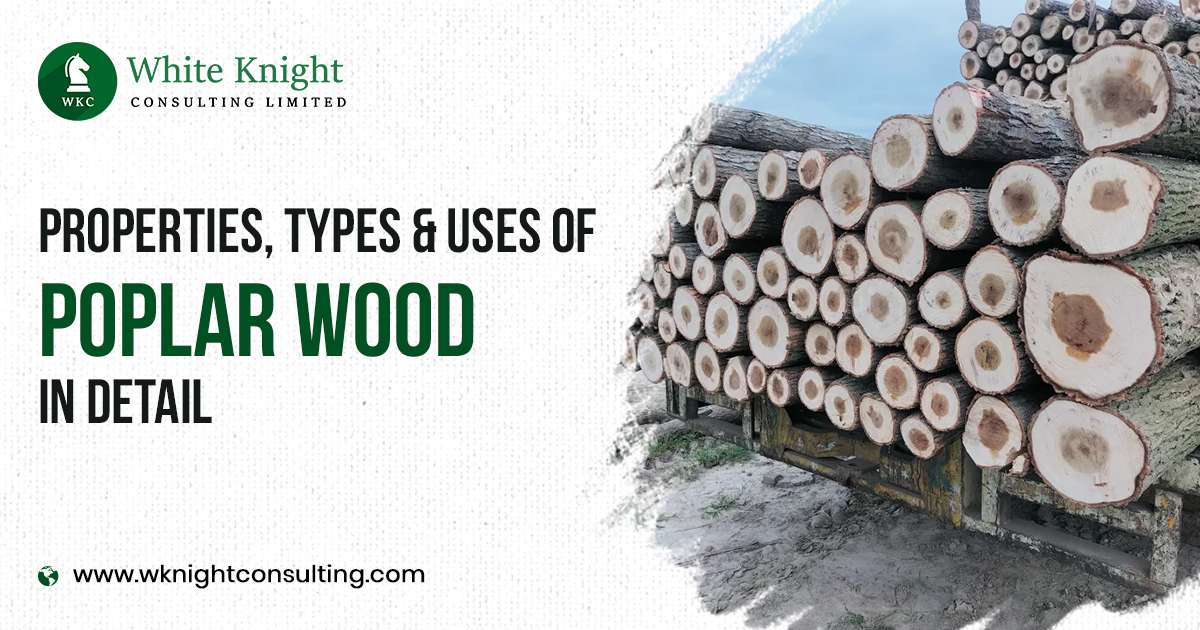Poplar is a hardwood species mainly used in making furniture and cabinets, wooden tools, toys, plywood, etc.
It is one of the softest types of hardwood. Despite being a hardwood species, it is relatively easy to work with. It also has a smooth surface and very few knots, which makes it a woodworker-favourite.
Poplar wood is cheaper than most hardwoods, softer than pine, moderately durable, and easily available, which are some reasons for its wide popularity.
If you are considering poplar hardwood for your next project, here’s everything you need to know about properties, types and uses of poplar wood.
About Poplar Wood
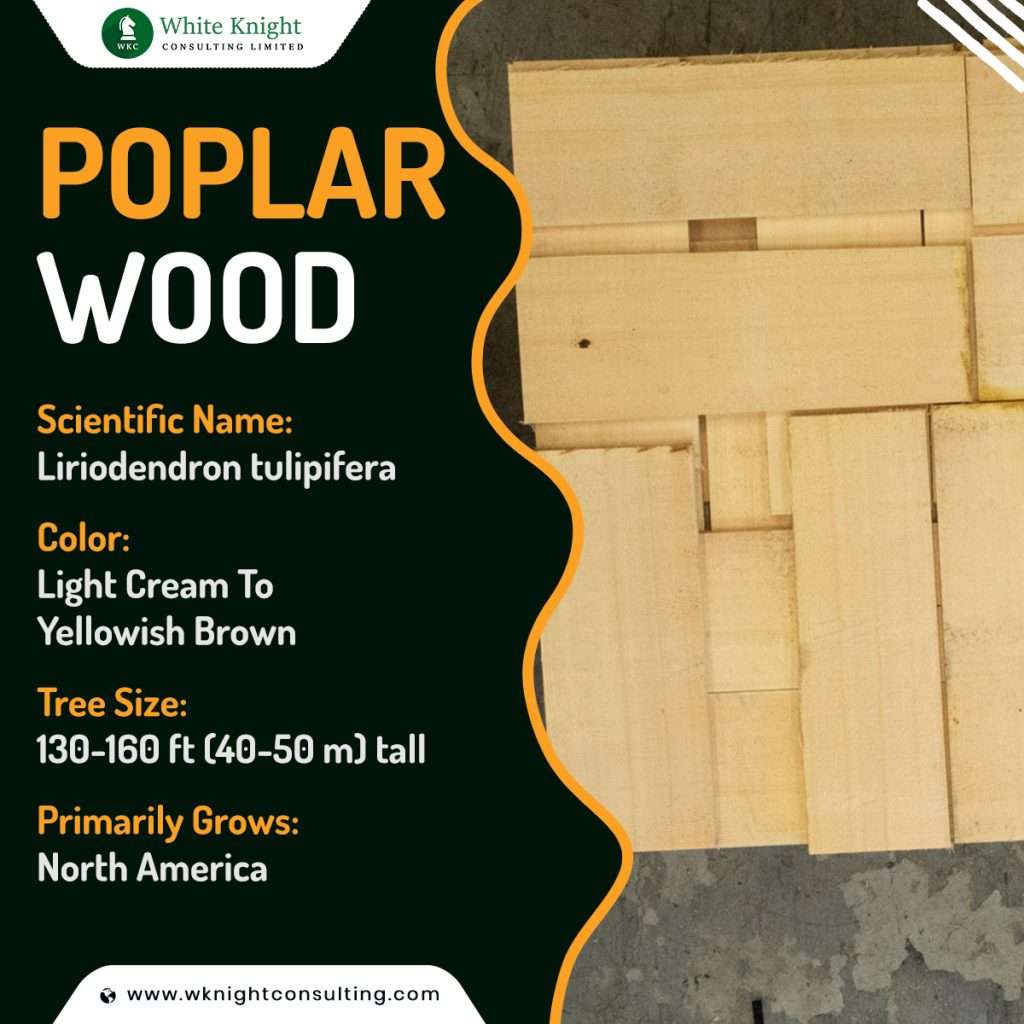
Poplar, also known as Tulip Poplar and Yellow Poplar, is a light and strong hardwood found primarily in the Eastern United States.
Poplar trees are about 130-160 ft (40-50 m) tall and have a 6-8 ft (1.8-2.5 m) trunk diameter. The wood is not very heavy or hard. The average dried weight of Poplar is 455 kg/m3 and the Janka (hardness) rating is only 540 lbf.
Poplar is famous as one of the easiest to work with woods. It has a straight grain and fine texture which makes it suitable for both hand and machining operations. It is also easy to stain, nail and glue, though its large pores can absorb paint very quickly.
Rather than for its appearance, it is more famous as a utility hardwood. It has flowers that look like tulips, hence the name (Tulip Poplar).
Poplar is one of the hardwoods that are even softer than some softwoods. It is also known for being inexpensive and readily available.
Poplar timber and plywood are used in furniture making, construction, pulpwood, cabinetry, pallets, and wooden toys, among other applications.
Poplar wood belongs to the genus Populus and has about 30 species. It is grown on plantations in and around North Carolina on a very large scale.
Physical Properties of Poplar Wood
Appearance
The natural colour of the poplar heartwood is light cream or yellowish brown, which gets darker when exposed to light or the sun. It sometimes has greyish or green steaks on its surface. The sapwood is light yellow or white.
Poplar is also famous for its mineral-stained variants, which exhibit a variety of colours ranging from red to dark purple, green, or brown.
The grain in poplar wood is usually straight and uniform and the texture is medium with low natural lustre. It is this characteristic that makes Poplar super easy to work with.
Durability
Poplar is a moderately durable wood. It is non-resistant to moisture and will quickly absorb water if it gets wet. It is also non-resistant to insect attack. As long as the poplar is dry and used in interior conditions, it will not rot or decay easily.
Workability
One of the best things about Poplar is that it is really easy to work with. It is soft and lightweight, which makes it easy to handle. However, shaping and sanding can sometimes result in fuzzy surfaces due to the poplar’s low density. Nailing is easy. It is also easy to stain, glue, and paint.
Strength
It is a fairly strong wood and is suitable for the construction of frames for furniture items such as beds and sofas.
Technical Properties of Poplar Wood
- Modulus of Rupture: 10,100 lbf/in2 (69.7 MPa)
- Elastic Modulus: 1,580,000 lbf/in2 (10.90 GPa)
- Crushing Strength: 5,540 lbf/in2 (38.2 MPa)
- Shrinkage: Radial: 4.6%, Tangential: 8.2%, Volumetric: 12.7%, T/R Ratio: 1.8
Sustainability
Poplar is easily and widely available and is not considered a threatened species. Moreover, poplar has a rapid growth rate, as poplar trees attain maturity in much less time than many other hardwoods.
Poplar Wood Availability & Price
Yellow poplar is primarily sourced from the Eastern United States. It is one of the most inexpensive and easily available hardwoods. Because of its low cost, poplar is often used as an alternative to other more popular and expensive hardwoods such as teak for furniture.
Poplar Wood Types
There are about 30 species of poplar, but the most popular ones are as follows:
1. Yellow Poplar
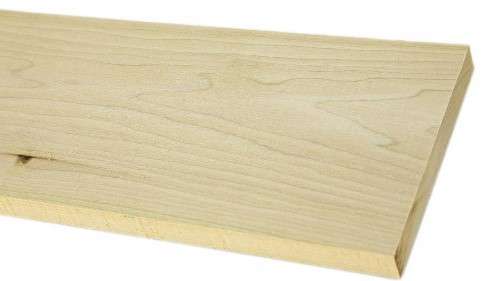
Yellow Poplar (Scientific Name: Liriodendron Tulipifera) is one of the most popular types of poplar wood. The interesting thing is that it is not actually a tree in the Populus genus, yet it is commonly sold and used as poplar wood. The yellow poplar or tulip poplar has great importance as a commercial lumber that is wide, knot-free, and straight.
Yellow poplar is a strong hardwood that is also easy to work with and much less expensive than many popular hardwoods. It is used for siding for homes, outdoor decks, rails, deck posts, furniture and plywood.
2. White Poplar
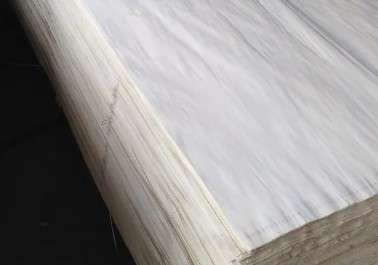
White poplar (Scientific name: Populus Alba) is a hardwood found in North America and also some parts of Europe and Asia. The trees are about 49-98 ft tall. Other names include silver poplar and Silverleaf poplar. As the name suggests, the tree is completely white as if covered in snow.
White poplar is famous for being very easy to stain or paint to give it the appearance of any other wood, which is why it is commonly used as an alternative to expensive woods such as oak or cherry for cabinetry, furniture, etc. It absorbs stains evenly and beautifully. It is inexpensive and easily available. It is also a popular choice for ceiling moulding.
3. Black Poplar
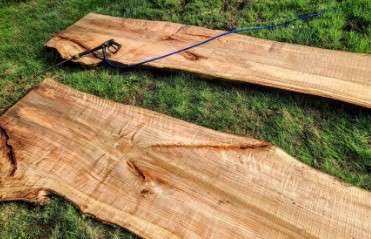
Black Poplar (Scientific Name: Populus Nigra) is found in Europe, Asia, and Africa. The trees are about 60-98 ft tall and 10-15 ft wide. The leaves of black poplar are dark greenish and the bark is greyish or almost black.
Also known as Lombardy Poplar, it is primarily used for firewood because of its low density and fast growth rate.
4. Cottonwood
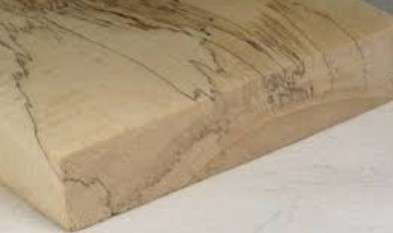
Cottonwood (Scientific Name: Populus Deltoides) is a wood species in the Populus genus. It grows in North America and has a really fast growth rate. The maximum height it can achieve ranges from 100 to 190 ft. The wood colour ranges from yellow-green to brown-grey depending on its age.
As a wood with low density and hardness, it is mainly used for firewood and also for ornamental uses. Traditionally, it was used to build houses and boats. It also makes a good food source for animals.
5. Balsam Poplar
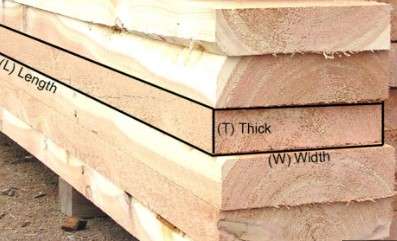
Balsam Poplar (Scientific Name: Populus Balsamifera) is obtained from the bamtree, which is found in North America and is about 80-100 ft tall. The wood pulp of balsam is used in construction and for making plywood. This type of poplar is also used for making furniture parts, pallets, and crates and for building oriented strand board (OSB), particleboard and wafer board.
Uses of Poplar Wood
Poplar is most commonly used as a utility hardwood. As a hardwood with a moderate appearance, low price and great workability, Poplar is a common choice of woodworkers for building low-end furniture items, cabinets, crates, boxes, turned objects and tool handles. It is also widely used in the paper (pulpwood) industry).
Rainbow Poplar, which is obtained by mineral staining regular poplar wood, is prized for its unique and attractive appearance.
Common uses of poplar hardwood include furniture, cabinets, pallets, crates, paper, plywood, veneer, wooden toys, and tools.
Furniture: Poplar is not a particularly attractive wood, but it is strong, cheap and easily available, which is why it is commonly used for making frames for upholstered furniture where the wood is not visible.
Pulpwood: Poplar is also extensively used for making wood pulp for use in construction, paper, paperboard, packaging paper and manufacturing industries and also to make plywood.
Firewood: Poplar is an excellent firewood, it burns easily and evenly. It has medium density and gives a pleasant scent when burning.
Plywood: Poplar wood is a common choice for making plywood and other types of engineered wood boards. It is also used in veneering as a less expensive alternative to other hardwoods.
Decorative: As a low-density, easy-to-work-with wood, poplar is also widely used for making decorative items and small speciality objects.
Poplar trees are also famous for their aesthetic appeal. Poplar wood might not be very attractive, but the trees with their yellow flowers look incredible and are used to enhance the natural beauty of gardens and landscapes.
Poplar is not an ideal wood for use in heavy-traffic areas such as flooring and in applications where it would be exposed to moisture. It is also not suitable for cutting boards.
Interesting fact: poplar boards have been historically used for painting art pieces. The most famous “Mona Lisa” by Leonardo da Vinci was painted on a poplar board. This shows how strong and enduring this wood really is. Poplar was also the main component of the structure of many historical musical instruments.
Buy Poplar Wood/Timber Online at Best Price
Looking to purchase poplar wood for your woodworking project? Poplar is an affordable & sustainable wood option, but selecting the right type can be challenging. If you need assistance in choosing the perfect poplar wood for sale or want to buy high-quality poplar wood at an excellent price, contact White Knight Consulting Ltd.
We are a top wood supplier and one of the leading timber exporters in the UK. We deliver wood in many countries across Europe, Asia, Africa, and the Middle East. When you buy wood from White Knight Consulting Ltd, you get the assurance of the best price and quality along with access to our incredible customer support and wood consulting services.
